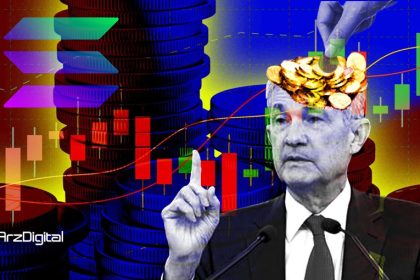On September 7, the bitcoin balance of exchanges reached its lowest level since January 2018. While various factors can underlie such a move, analysts often interpret this change as a bullish signal. Considering the correctness of this assumption, the question arises as to what caused Bitcoin’s inability to cross the $31,000 level?
According to Cointelegraph, the prospect of lower Bitcoin inventory on centralized exchanges is based on the idea that traders are withdrawing their coins from exchanges as a result of bullish sentiment. This is usually accompanied by a move towards a strategy of holding bitcoins for the long term in non-trusted wallets.
Although these hypotheses lack conclusive evidence, their persistence probably stems from the repetition of this behavioral pattern in the past. It would be difficult, if not impossible, to find a specific reason for these behavior patterns, regardless of how often such events occur. Note that while buying Bitcoin on exchanges will likely require a deposit of fiat currency up front, the reverse is not necessarily true.
The data does not show correlation between the Anchain indices and Bitcoin price performance
A review of blockchain transaction data shows a continuous decrease in Bitcoin deposits in exchanges since mid-May (late May). Meanwhile, Bitcoin price behavior does not indicate the beginning of an upward trend. With the exception of a short bullish wave in mid-June, which coincided with BlackRock’s filing to launch a spot bitcoin ETF.
The interesting point is that at the same time as the price increased by 30% between March 12 and 19 (March 21 to 28), we saw an increase in Bitcoin deposits in exchanges, which was contrary to the predictions based on such analysis. Despite this contradiction, few analysts have investigated the flaws of this kind of fake stories in market analysis. Perhaps because it is easy to attribute the intensification of depositing to exchanges to the increase in desire to sell.
Of course, all indicators are sometimes flawed, and relying on such analysis to dictate labor market trends is unwise. However, the notion that Bitcoin withdrawals from exchanges are primarily for the purpose of transferring these assets to cold wallets also lacks substantial basis and is largely considered a hypothetical proposition. For example, there are three possible reasons that explain the decline in exchange deposit trends that are not related to a decrease in traders’ willingness to sell short.
The movement of Bitcoin investors towards non-trust solutions
The most important explanation for the withdrawal of Bitcoin from exchanges, which does not necessarily indicate a reduction in selling pressure in the short term, is the increasing reliance on non-custodial solutions. This means that these coins may have been purchased in the past and the owner just moved it recently. The bankruptcy of reputable companies such as “Prime Trust” surprised many investors due to a shortfall in customer funds. In addition, in June, a significant amount of 35 million dollars was stolen from the assets of Atomic Volt users. Distrust of custody solutions for keeping digital currencies can indicate a cautious approach of investors before starting to withdraw from exchanges.
Loss of investors’ trust in centralized exchanges
On June 5, the United States Securities and Exchange Commission filed a complaint against the Binance exchange for allegedly offering unregistered securities. Just a day after suing Binance, the agency sued Coinbase, claiming that some of the altcoins listed on the exchange were securities. In addition, “Semaphore” report on August 2 (11 August) showed that officials of the United States Department of Justice were concerned about the tool issue that the declaration of crime against Binance could lead to the downfall of this exchange; Like the fall of the FTX exchange in November 2022 (Aban 1401). This increased regulatory pressure could have influenced users’ decision to withdraw their assets from exchanges, regardless of their intention to sell. As a result, Bitcoin withdrawals from exchanges can be unrelated to price fluctuations.
A decrease in buyer interest can balance the trend
Even if we assume that most of the bitcoins leaving exchanges are actually going to cold wallets, meaning investors are less willing to sell short-term, the demand side has its own problems. For example, the amount of searches for the word “buy Bitcoin” in Google Trends has been able to exceed 50% of its peak two years ago.

Similarly, spot bitcoin trading volume in August averaged $7 billion per day, which is less than half of the January-March period.

As a result, the data underscores a decline in buyer interest, which in turn means a lack of upward movement in Bitcoin’s price trend. This parallel trend is consistent with the decrease in the number of coins deposited in exchanges. As a result, despite the decrease in the stock of Bitcoin in the exchanges to the levels we last saw in 2018, due to the decrease in the volume of transactions, the impact of the imbalance of supply and demand on the price is insignificant.
Finally, while such data may indicate a shift in investors’ strategy towards holding coins for the long term, this view has little support in terms of price dynamics; Because this trend could reflect a widespread reluctance to trade Bitcoin.
RCO NEWS

















